Find Help
More Items From Ergsy search
-
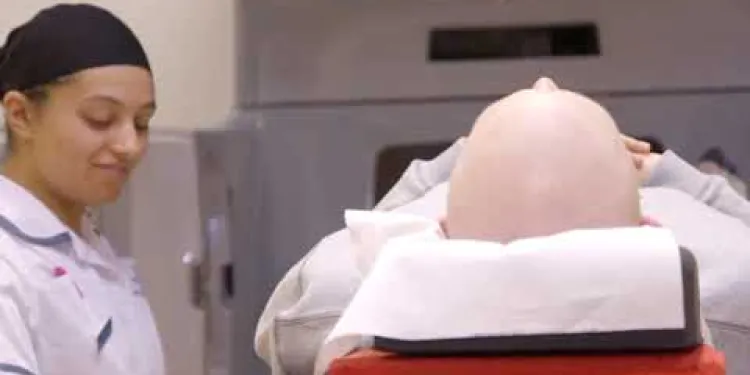
What is Radiotherapy, and its use in treatment for cancers?
Relevance: 100%
-
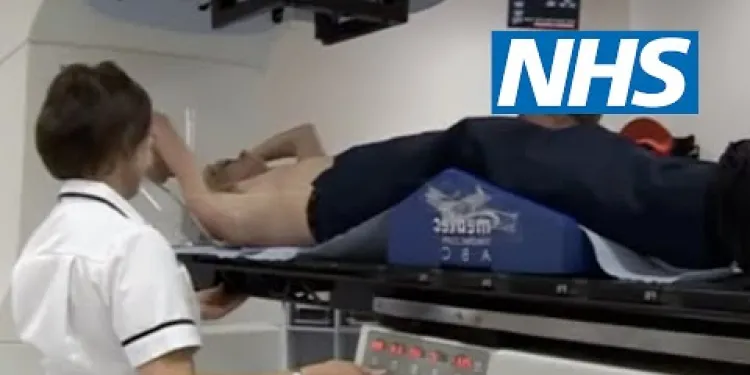
Cancer treatment: what happens during radiotherapy? | NHS
Relevance: 89%
-
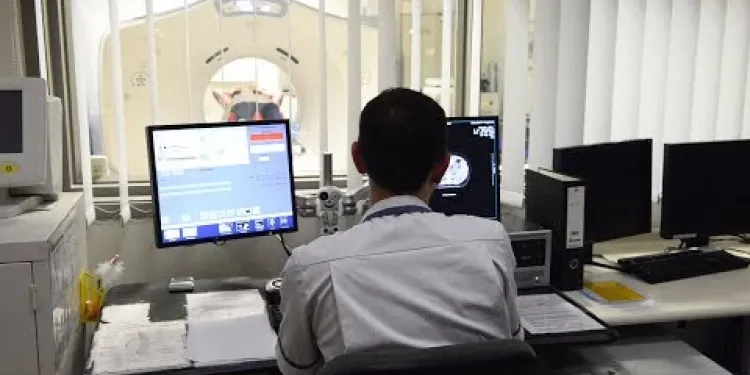
Having radiotherapy for breast cancer - 3 Videos
Relevance: 85%
-
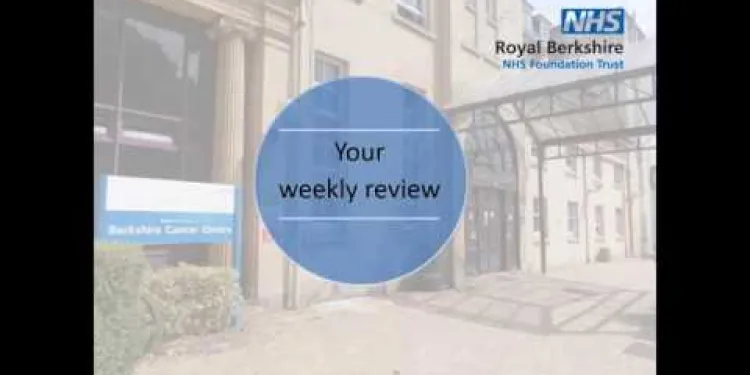
Royal Berkshire NHS Foundation Trust: Radiotherapy for prostate cancer
Relevance: 79%
-

What is it like having Prostate Radiotherapy treatment?
Relevance: 76%
-
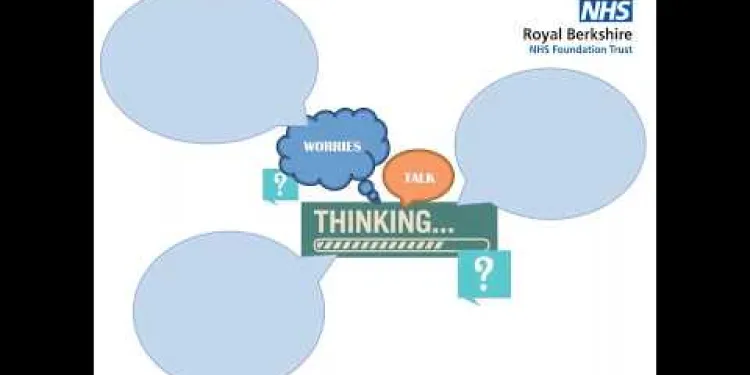
Royal Berkshire NHS Foundation Trust: Radiotherapy for head and neck cancers
Relevance: 75%
-

Radiotherapy CT scanner
Relevance: 71%
-
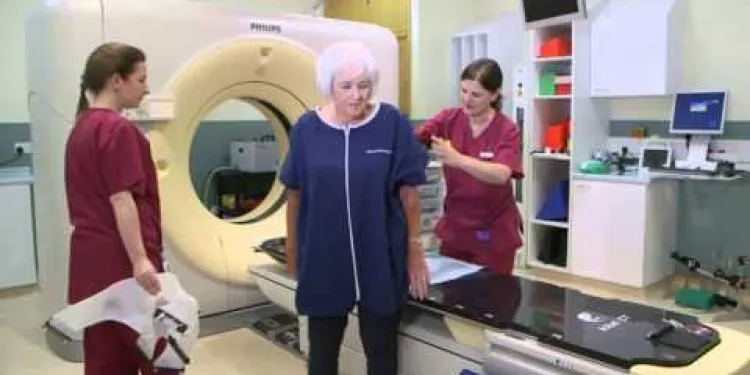
Radiotherapy to the Head and Neck: A Guide for patients and their carers
Relevance: 69%
-
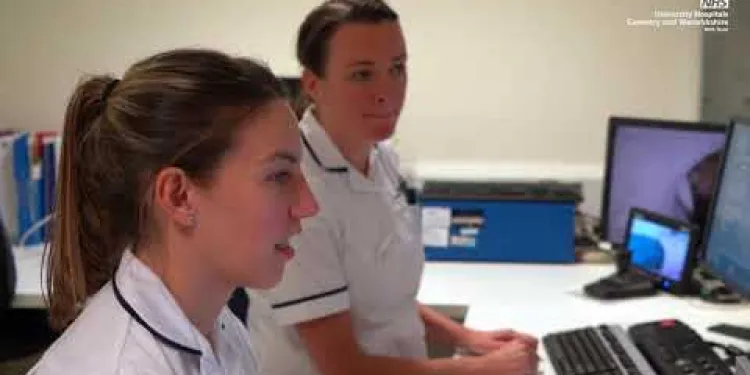
Radiotherapy Services at University Hospital
Relevance: 67%
-
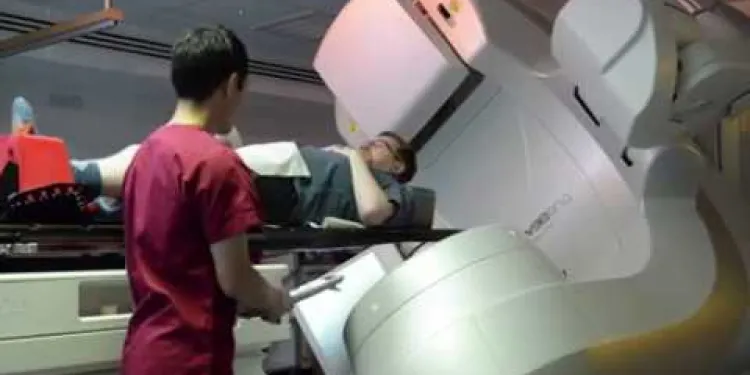
A Radiotherapy appointment in east and North Hertfordshire
Relevance: 63%
-
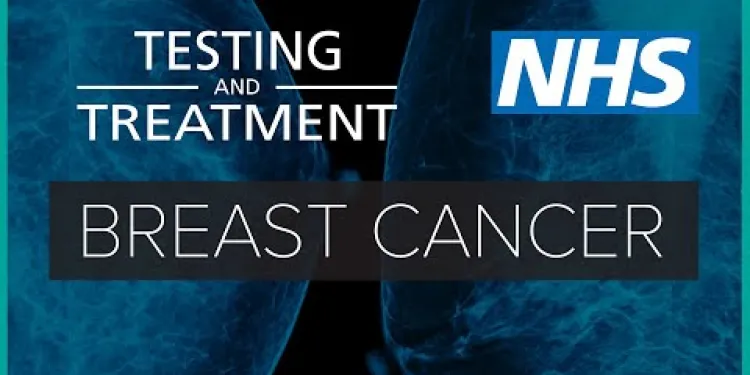
Breast cancer: testing and treatment | NHS
Relevance: 62%
-

What treatment options are available for bowel cancer?
Relevance: 58%
-

What are the side effects of bowel cancer treatment?
Relevance: 56%
-

What is Paillon treatment for cancer?
Relevance: 51%
-
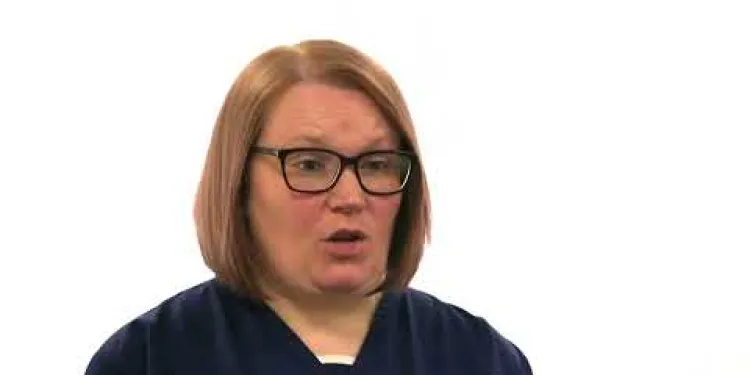
Vulval Cancer
Relevance: 49%
-

Breakthrough in Cancer Treatment Offers Hope for Prostate Cancer Patients
Relevance: 49%
-

Treating prostate cancer
Relevance: 48%
-

What types of treatments are available for testicular cancer?
Relevance: 47%
-

Can children with cancer receive Paillon treatment?
Relevance: 47%
-

Can testicular cancer recur after treatment?
Relevance: 46%
-
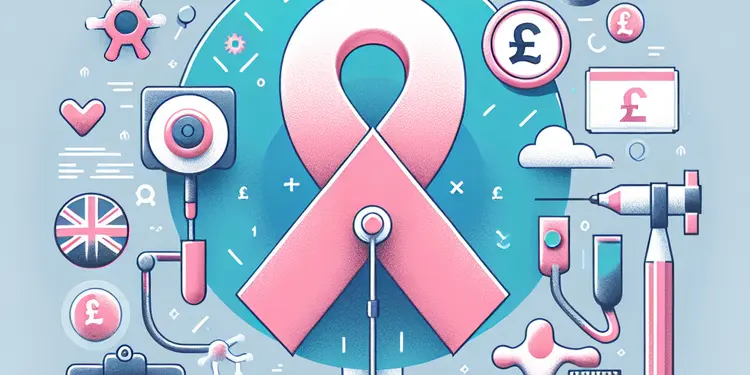
Does Paillon treatment treat all types of cancer?
Relevance: 45%
-

Breakthrough Cancer Treatment Shows Promise for NHS Patients
Relevance: 45%
-

What is testicular cancer?
Relevance: 43%
-

What is Bowel Cancer?
Relevance: 43%
-

What is testicular cancer?
Relevance: 43%
-
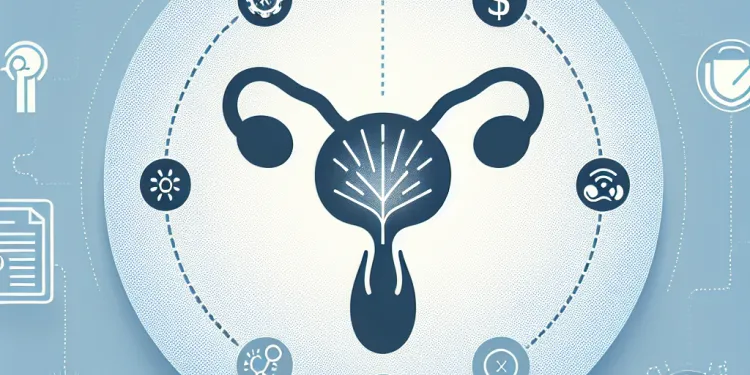
Hormone Therapy for prostate cancer
Relevance: 42%
-

Is fertility affected by testicular cancer?
Relevance: 41%
-
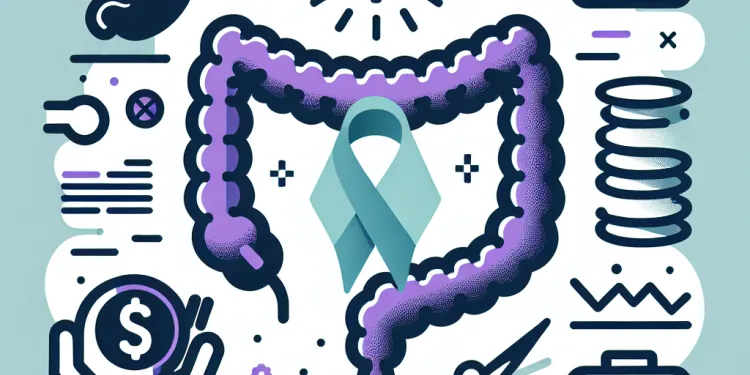
What is the survival rate for bowel cancer?
Relevance: 41%
-

Learn about bowel cancer (British Sign Language version)
Relevance: 39%
-
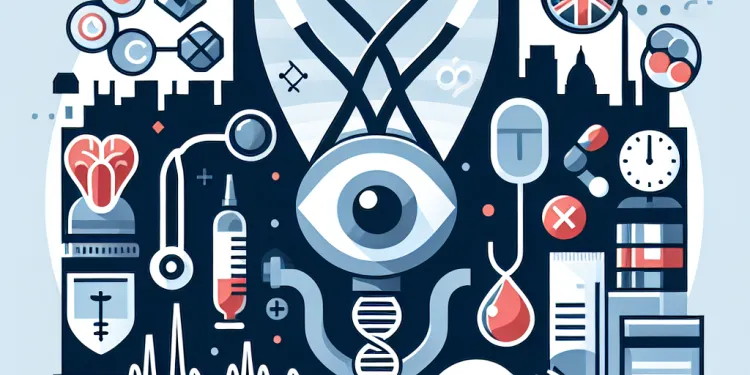
What role do tumor markers play in testicular cancer?
Relevance: 39%
-
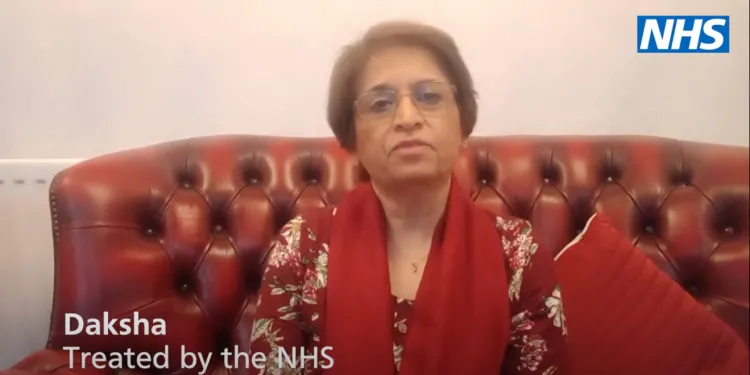
What is Cancer?
Relevance: 38%
-

What support is available for individuals diagnosed with bowel cancer?
Relevance: 38%
-

Endometrial Cancer
Relevance: 38%
-
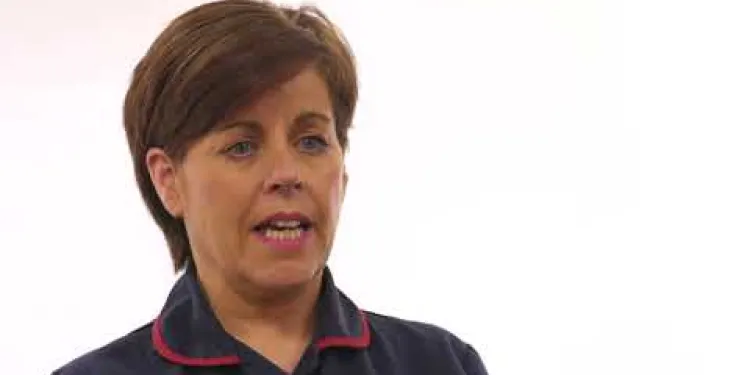
Ovarian Cancer
Relevance: 38%
-

Vaginal Cancer
Relevance: 38%
-

Endometrial Cancer
Relevance: 37%
-

Endometrial Cancer
Relevance: 37%
-

Is testicular cancer treatable?
Relevance: 37%
-

What is the difference between colon cancer and rectal cancer?
Relevance: 37%
-
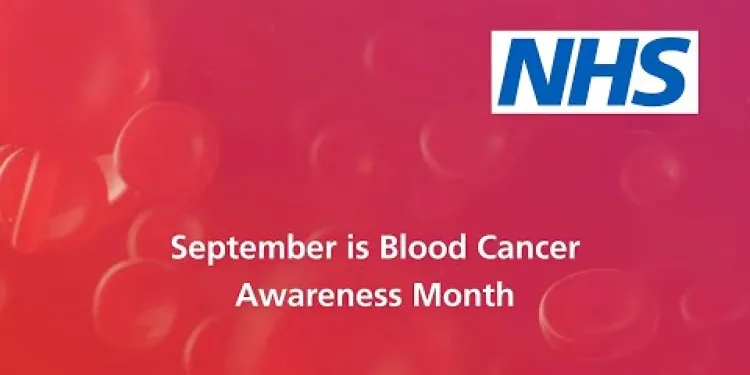
4 facts about blood cancer that you should know | NHS
Relevance: 37%
Radiotherpay treatment for cancers and tumours
Radiotherapy, also known as radiation therapy, is a medical treatment that uses high-energy radiation to target and destroy cancer cells or to shrink tumors. It is one of the primary treatment modalities for cancer and is often used in conjunction with surgery, chemotherapy, or immunotherapy, depending on the type and stage of cancer.
The main goals of radiotherapy are:
- Tumor Shrinkage: Radiotherapy can be used to shrink tumors before surgery, making them easier to remove.
- Cancer Cell Destruction: Radiation damages the DNA inside cancer cells, preventing them from growing and dividing. Eventually, these damaged cells die off.
- Local Control: Radiotherapy is particularly useful for treating cancer that is confined to a specific area of the body. It can target the tumor with precision, minimizing damage to surrounding healthy tissue.
There are different types of radiation therapy, including:
- External Beam Radiotherapy (EBRT): This is the most common form of radiotherapy, where a machine outside the body delivers targeted radiation beams to the tumor. The patient typically undergoes daily treatments over a course of several weeks.
- Internal Radiotherapy (Brachytherapy): In this approach, radioactive sources are placed directly inside or very close to the tumor. It's often used for cancers of the cervix, prostate, and other organs.
- Systemic Radiotherapy: Radioactive substances, such as radioactive iodine, are given orally or intravenously to target cancer cells throughout the body. This is mainly used for thyroid cancer and some forms of bone cancer.
External beam radiotherapy (EBRT)
External beam radiotherapy is a widely used cancer treatment modality that delivers high-energy X-ray or proton beams from a machine outside the patient's body to target and destroy cancer cells. This non-invasive technique is based on the principle of ionizing radiation damaging the DNA of cancer cells, preventing them from dividing and growing. Precise planning and delivery are critical to spare healthy tissues while irradiating tumors effectively. Patients typically receive multiple daily or weekly sessions over several weeks. External beam radiotherapy is used as a primary treatment, in combination with surgery or chemotherapy, or for palliative care to alleviate cancer-related symptoms. Its success relies on advanced technology, skilled medical professionals, and personalized treatment plans to maximize therapeutic outcomes and minimize side effects.
Internal Radiotherapy (Brachytherapy)
Internal radiotherapy, also known as brachytherapy, is a targeted cancer treatment that involves placing radioactive sources directly within or near the tumor site. Unlike external beam radiation, brachytherapy delivers a precise dose of radiation internally, minimizing exposure to healthy surrounding tissues. This technique is employed for various cancers, including prostate, cervical, and breast cancer. There are two main types: intracavitary and interstitial. Intracavitary brachytherapy involves positioning radiation sources inside body cavities, while interstitial brachytherapy places them directly into the tumor tissue. Brachytherapy is often used in conjunction with external radiation or as a sole treatment, depending on the cancer type and stage. Its advantages include shorter treatment durations, reduced side effects, and enhanced dose conformity, making it a valuable option in the fight against cancer.
Systemic Radiotherapy
Systemic radiotherapy, also referred to as radiopharmaceutical therapy, is a medical treatment that uses radioactive substances to target and treat cancer cells throughout the body. This therapy involves the administration of radioactive drugs, usually intravenously, which circulate through the bloodstream and selectively accumulate in cancerous tissues. Once concentrated in the tumor, the radiation emitted from these substances damages cancer cells, inhibiting their growth or causing cell death. Systemic radiotherapy is particularly effective for cancers that have spread to multiple locations or are challenging to reach with surgery or external radiation. It can help manage symptoms, slow disease progression, and improve the quality of life for cancer patients while minimizing damage to healthy tissues.
The choice of radiotherapy type and duration depends on factors like the type of cancer, its location, size, and stage, as well as the patient's overall health and medical history. Radiation therapy can cause side effects, which can vary depending on the area being treated, but advancements in technology have helped reduce these side effects and improve the precision of treatment.
Radiotherapy is typically administered by a team of healthcare professionals, including radiation oncologists, medical physicists, and radiation therapists, who work together to plan and deliver the treatment while minimizing harm to healthy tissues.
What is Radiotherapy?
Radiotherapy is a medical treatment that uses high-energy radiation to target and destroy cancer cells. It is one of the primary methods used to treat cancer, alongside surgery and chemotherapy. The goal of radiotherapy is to damage the DNA within cancer cells, preventing them from growing and dividing. Over time, the damaged cancer cells die, and the body naturally eliminates them.
Types of Radiotherapy
There are two main types of radiotherapy: external beam radiotherapy and internal radiotherapy (also known as brachytherapy). External beam radiotherapy involves directing radiation at the cancer from outside the body using a machine called a linear accelerator. In contrast, internal radiotherapy involves placing radioactive material directly inside or near the tumor.
Uses of Radiotherapy in Cancer Treatment
Radiotherapy is versatile and can be used to treat a wide range of cancers. It can be used as a primary treatment to eradicate cancer or as an adjuvant therapy to shrink tumors before surgery (neoadjuvant radiotherapy) or destroy any remaining cancer cells after surgery (adjuvant radiotherapy). In some cases, radiotherapy is used for palliative care to relieve symptoms and improve the quality of life of patients with advanced cancer.
Benefits of Radiotherapy
Radiotherapy offers several benefits, including its ability to precisely target cancer cells while sparing surrounding healthy tissue. Modern techniques like intensity-modulated radiotherapy (IMRT) and image-guided radiotherapy (IGRT) further enhance accuracy. This precision reduces side effects and allows for higher doses of radiation to be administered directly to the tumor, improving the chances of successful treatment.
Radiotherapy in the United Kingdom
In the United Kingdom, radiotherapy is widely available through the National Health Service (NHS). Patients may receive treatment at specialized cancer centers equipped with the latest technology and staffed by experienced oncology professionals. The NHS provides comprehensive care, including support services to manage side effects and emotional well-being throughout the treatment process.
Radiotherapy Treatment for Cancer and Tumors
Radiotherapy is a medical treatment. It uses strong energy, called radiation, to kill cancer cells or make tumors smaller. Doctors use it to treat many types of cancer. Sometimes, it is used with surgery, medicine, or other treatments, depending on the type and stage of cancer.
The Main Goals of Radiotherapy Are:
- Making Tumors Smaller: Radiotherapy can make tumors smaller before surgery, so doctors can remove them more easily.
- Killing Cancer Cells: Radiation damages the inside of cancer cells. This stops them from growing. The bad cells then die.
- Targeting Specific Areas: Radiotherapy can treat cancer in a specific part of the body. It focuses on the tumor and protects the healthy tissue around it.
Different Types of Radiotherapy:
- External Beam Radiotherapy (EBRT): A machine outside the body sends radiation to the tumor. Patients often visit the hospital daily for treatments over several weeks.
- Internal Radiotherapy (Brachytherapy): Doctors put radioactive materials inside or near the tumor. This method is used for some specific kinds of cancer, like cervical or prostate cancer.
- Systemic Radiotherapy: This treatment uses radioactive medicine to reach cancer cells all over the body. Patients take it by mouth or through a needle. It is often used for thyroid cancer or bone cancer.
External Beam Radiotherapy (EBRT)
External Beam Radiotherapy uses X-ray or proton beams aimed at cancer from outside the body. The aimed beams damage cancer cells and stop them from growing. Patients usually have several sessions. This type of treatment helps as a main treatment, along with surgery or to help reduce symptoms. It requires careful planning and skilled healthcare professionals to work effectively and safely.
Internal Radiotherapy (Brachytherapy)
Internal Radiotherapy, or brachytherapy, involves putting radioactive materials directly in or near the tumor. It gives direct radiation to the tumor with less impact on healthy tissue. This treatment is common for prostate, cervical, and breast cancer. Brachytherapy can work with external radiation or alone, depending on the situation. It often has fewer side effects and takes less time than other treatments.
Systemic Radiotherapy
Systemic Radiotherapy uses radioactive drugs to attack cancer all over the body. These drugs travel in the blood and go to cancer cells. When inside the tumor, the radiation kills cancer cells. This treatment works well when cancer has spread or can't be reached easily. It helps control symptoms and slow cancer's growth.
Doctors choose the type of radiotherapy based on the cancer type, where it is, its size, and the patient’s health. Radiotherapy can cause side effects, but new technology helps reduce them and makes treatment more accurate.
A team of healthcare professionals gives radiotherapy. This team includes specialists who plan and give the treatment safely, protecting healthy tissues as much as possible.
Support Tools: Patients can use tools like calendars to track appointments and talk about any side effects with their healthcare team. It’s also important to rest and eat well during treatment.
What is Radiotherapy?
Radiotherapy is a treatment for cancer. It uses powerful rays to kill cancer cells. It is one of the main ways to treat cancer, along with surgery and special drugs called chemotherapy. Radiotherapy aims to damage the cancer cells so they can't grow or spread. After a while, these bad cells die, and your body gets rid of them naturally.
Types of Radiotherapy
There are two main kinds of radiotherapy: external beam radiotherapy and internal radiotherapy, also called brachytherapy. External beam radiotherapy uses a machine to aim rays at the cancer from outside your body. Internal radiotherapy places tiny radioactive things directly inside or very close to the cancer.
Uses of Radiotherapy in Cancer Treatment
Radiotherapy can treat many types of cancer. It can be the main treatment to get rid of cancer or used with surgery. Sometimes, it's used before surgery to shrink the cancer (called neoadjuvant radiotherapy) or after surgery to kill leftover cancer cells (called adjuvant radiotherapy). Radiotherapy can also help when cancer cannot be cured to make you feel better.
Benefits of Radiotherapy
Radiotherapy is very good because it can focus exactly on the cancer cells, leaving healthy parts around it mostly safe. New methods like IMRT and IGRT make it even more precise. This accuracy means fewer side effects and stronger doses to the cancer, which can make the treatment work better.
Radiotherapy in the United Kingdom
In the United Kingdom, you can get radiotherapy through the National Health Service (NHS). You can have your treatment at special cancer centers with the best technology and skilled professionals. The NHS takes care of you completely, including helping with side effects and supporting your feelings during treatment.
Frequently Asked Questions
What is radiotherapy?
Radiotherapy is a treatment that uses high doses of radiation to kill cancer cells and shrink tumors.
How does radiotherapy work?
Radiotherapy works by damaging the DNA inside cancer cells, which stops them from growing and dividing, eventually leading to cell death.
What types of radiotherapy are available?
There are two main types of radiotherapy: external beam radiotherapy, where radiation is aimed at the cancer from outside the body, and internal radiotherapy (brachytherapy), where radiation is placed inside the body close to the cancer cells.
Is radiotherapy used alone or with other treatments?
Radiotherapy can be used alone or in combination with other treatments like surgery, chemotherapy, or hormone therapy.
What cancers can be treated with radiotherapy?
Radiotherapy is commonly used to treat a wide range of cancers, including breast, prostate, lung, and colorectal cancers, among others.
How is radiotherapy planned and delivered?
A team of specialists, including oncologists and radiographers, plan the treatment using imaging tests to determine the precise location and dosage of radiation. The treatment is then delivered over several sessions.
What are the potential side effects of radiotherapy?
Common side effects include fatigue, skin reactions, and changes to the treated area. Long-term side effects vary depending on the treatment area but may include changes in bowel or bladder function, and infertility.
How long does a typical radiotherapy treatment last?
The length of radiotherapy treatment depends on the type and location of the cancer but typically ranges from a few days to several weeks.
Will I be radioactive during or after radiotherapy?
Only patients undergoing internal radiotherapy (brachytherapy) may be temporarily radioactive. Patients receiving external beam radiotherapy are not radioactive and do not pose a risk to others.
Can radiotherapy cure cancer?
Radiotherapy can sometimes cure cancer by completely eradicating the cancer cells. However, its effectiveness depends on the type, location, and stage of the cancer.
How is the area to be treated with radiotherapy determined?
The treatment area is determined using imaging techniques like CT, MRI, or PET scans to precisely locate the cancer and plan the therapy accordingly.
What preparations are needed before starting radiotherapy?
Patients may undergo a planning session to map the treatment area and receive instructions on diet, medications, and skin care during treatment.
Is radiotherapy painful?
Radiotherapy itself is painless, although some side effects, such as skin irritation and soreness in the treated area, can cause discomfort.
Can radiotherapy be used to relieve symptoms?
Yes, radiotherapy can be used palliatively to relieve symptoms like pain, bleeding, or obstruction caused by advanced cancers.
What support is available for patients undergoing radiotherapy?
Patients can access a range of support services, including counselling, nutritional advice, and support groups, to help manage the physical and emotional impacts of treatment.
What is radiotherapy?
Radiotherapy is a way to treat cancer. It uses strong rays, like X-rays, to kill cancer cells. These rays focus on the parts of the body where cancer is found.
Doctors use special machines to aim the rays at the cancer. This helps make the cancer smaller or go away.
Tools that can help you understand:
- Pictures: Look at pictures that explain how radiotherapy works.
- Videos: Watch a short video about what happens during radiotherapy.
- Ask a Helper: Talk to a grown-up or a doctor if you have questions.
Radiotherapy is a way to treat cancer. It uses strong rays to kill cancer cells and make cancer spots smaller.
How does radiotherapy work?
Radiotherapy is a way to treat cancer. It uses powerful rays like X-rays to kill cancer cells.
Cancer cells grow too fast, and radiotherapy helps stop this. It can make tumors smaller or go away.
If you find this hard, try asking someone to read with you. You can also watch videos about radiotherapy to understand better.
Radiotherapy helps to treat cancer. It hurts the DNA in cancer cells. This stops the cells from growing and splitting up. Soon, the cancer cells die.
What types of radiotherapy can you get?
There are different kinds of radiotherapy that can help treat cancer. Here are some types:
- External radiotherapy: A big machine shines rays at the cancer from outside your body.
- Internal radiotherapy: Doctors put something small with radiation inside your body, near the cancer.
- Systemic radiotherapy: You take a medicine that goes all over your body to find and treat cancer.
If you don't understand, you can ask your doctor to explain. You can also bring someone with you to help remember and ask questions.
It might help to write down information or draw pictures to make it clearer. There are support groups where people talk about their experiences. They can help too.
There are two main kinds of radiotherapy:
External beam radiotherapy: This is when a special machine shines rays at the cancer from outside the body.
Internal radiotherapy (brachytherapy): This is when a small thing that gives off rays is put inside the body near the cancer cells.
Helpful Tip: It might help to use pictures or videos to understand better.
Do people get only radiotherapy or other treatments too?
Radiotherapy is sometimes used by itself. Other times, it is used with other treatments. Doctors decide what is best for each person.
If you want to understand more, you can ask the doctor to explain. You can also use pictures to help understand. Bringing a friend or family member to talk with you can also help.
Radiotherapy can be used by itself or with other treatments. These treatments might include surgery, medicine to kill cancer (called chemotherapy), or medicine that changes hormones.
What cancers can be treated with radiotherapy?
Radiotherapy is a treatment that uses strong rays, like X-rays, to kill cancer cells. It can help with many types of cancer. Here are some cancers that can be treated with radiotherapy:
- Breast cancer
- Prostate cancer
- Lung cancer
- Brain cancer
- Skin cancer
Doctors decide if radiotherapy is right by looking at the type of cancer and where it is in the body. If you have questions, you can talk to a doctor or a nurse.
It can also help to use pictures and watch videos to understand better.
Doctors use radiotherapy to treat many types of cancer. This includes breast cancer, prostate cancer, lung cancer, and bowel cancer.
How do doctors plan and give radiotherapy?
Doctors use special tools to make a plan for your treatment.
They want to make sure the radiotherapy goes to the right spot in your body.
Here’s how it works:
- First, doctors take pictures of the inside of your body. They use machines like a CT or MRI scanner. These pictures help them see exactly where the problem is.
- Next, they use computers to plan how the radiotherapy will get to the problem area. They decide how much treatment you need and where it should go.
- Then, when it’s time for your treatment, you will lie on a special table. The radiotherapy machine will move around you to aim at the right spot.
Support tools that help:
- You can ask for a person to explain each step of the treatment to you.
- Sometimes doctors give you relaxation music or headphones to help you stay calm.
- Ask if someone can go with you to your appointment if that makes you feel better.
A group of doctors and experts, like cancer doctors and X-ray experts, make a plan for the treatment. They use special pictures of the body to find out exactly where and how much radiation to use. The treatment happens over a few visits.
What can happen after radiotherapy?
Radiotherapy is a treatment that uses strong rays to kill cancer cells. It might make you feel different. Here are some things that might happen:
- You could feel very tired.
- Your skin might turn red or feel sore.
- You might not feel hungry or might feel sick.
- Your hair might fall out, but it can grow back.
If you are worried, talk to your doctor or nurse. They can help you feel better. You can ask someone to come with you to appointments. It might also help to keep a notebook to write down how you are feeling.
Some common side effects are feeling very tired, skin changes, and changes where you had treatment. Long-term side effects can be different. They depend on where you had the treatment.
Long-term side effects might be problems with going to the bathroom or not being able to have children.
Using pictures or simple words can help understand this more. You can ask a doctor or nurse to explain better if you need help.
How long does radiotherapy usually take?
Radiotherapy is a way to treat cancer. It uses special beams to kill bad cells. Each session is quick. It takes about 10 to 30 minutes. You might need to go many times. A full treatment can last a few weeks.
If you find it hard to understand, ask someone to help explain. You can also use pictures or videos to learn more.
How long you have radiotherapy depends on where the cancer is and what type it is. It can last a few days to a few weeks.
Will I be radioactive during or after radiotherapy?
No, you will not be radioactive. Radiotherapy treats cancer inside your body. The treatment goes away when it is done. It is safe to be around other people.
Would you like some tips to make reading easier? You can:
- Ask someone you trust to read it with you.
- Use a ruler or your finger to keep your place in a text.
- Take breaks if you get tired.
Some people get a special kind of treatment called brachytherapy. This can make them a little bit radioactive for a short time. But people who have another treatment, called external beam radiotherapy, are not radioactive. They are safe to be around others.
Can radiotherapy make cancer go away?
Radiotherapy is a treatment that uses strong rays to fight cancer.
Sometimes, it can help make cancer go away.
Other times, it helps to make the cancer smaller or stop it from growing.
If someone is getting radiotherapy, they can ask their doctor how it might help them.
Radiotherapy is a type of treatment. It can sometimes get rid of cancer completely by killing all the cancer cells. But how well it works can depend on a few things. It depends on what kind of cancer it is, where the cancer is in the body, and how far along the cancer is.
How do doctors decide where to use radiotherapy?
Doctors use special tools and tests to find the exact area to treat with radiotherapy. They might use pictures from machines like X-rays or MRI scans. These pictures help doctors see inside the body. Doctors also talk to you and check your health to make sure they find the right spot.
If you have questions, ask your doctor or a nurse. They can give you more information and support.
Doctors use special pictures from machines like CT, MRI, or PET scans. These pictures help them find where the cancer is in the body. Then, they can plan how to treat it the right way.
What to do before starting radiotherapy?
There are some things you need to do before starting radiotherapy. Here are some simple steps to help you get ready:
- Talk to your doctor. They will explain what will happen and answer your questions.
- If you have a loved one or friend, ask them to go with you for support.
- The doctor might need to take pictures or scans of your body. This helps them know where to aim the treatment.
- You might need to visit the hospital for a check-up. This is to make sure you are ready.
Using tools like picture cards or videos can help you understand better. Don't be afraid to ask if something is unclear.
Patients might have a special meeting to plan their treatment. In this meeting, they will learn about what part of the body will be treated. They will also get advice on what to eat, which medicines to take, and how to look after their skin during the treatment.
Does radiotherapy hurt?
No, radiotherapy does not usually hurt. You won't feel anything while treatment is happening.
But sometimes the skin can get red or sore after treatment. This is similar to having a sunburn.
If you feel any discomfort, tell your doctor or nurse. They can help with creams or medicines.
Radiotherapy does not hurt when you have it, but it can make your skin sore and itchy where you are being treated.
Can radiotherapy help with symptoms?
Yes, doctors can use special x-ray treatment to help people with cancer feel better. This treatment can help if someone has bad pain, bleeding, or if the cancer is making it hard for things to move inside the body.
What help can people get during radiotherapy?
Radiotherapy is a treatment for cancer that uses strong rays to kill cancer cells.
There are many ways to get help if you are having radiotherapy:
- Talk to a doctor or nurse. They can explain what will happen and answer questions.
- You can ask for a counselor to help you with feelings and worries.
- Join a support group to meet other people who are having radiotherapy too.
- Family and friends can help by talking to you or going with you to treatments.
- Some places have volunteers that can be there to help you feel better.
It is important to talk to someone if you feel scared or sad. They are there to help you.
People can get help from different services. These services can include talking to a counselor, getting advice about healthy eating, and joining support groups. These can help with the body and feelings during treatment.
Useful Links
- Ergsy carfully checks the information in the videos we provide here.
- Videos shown by Youtube after a video has completed, have NOT been reviewed by ERGSY.
- To view, click the arrow in centre of video.
- Most of the videos you find here will have subtitles and/or closed captions available.
- You may need to turn these on, and choose your preferred language.
- Go to the video you'd like to watch.
- If closed captions (CC) are available, settings will be visible on the bottom right of the video player.
- To turn on Captions, click settings .
- To turn off Captions, click settings again.
More Items From Ergsy search
-

What is Radiotherapy, and its use in treatment for cancers?
Relevance: 100%
-

Cancer treatment: what happens during radiotherapy? | NHS
Relevance: 89%
-

Having radiotherapy for breast cancer - 3 Videos
Relevance: 85%
-

Royal Berkshire NHS Foundation Trust: Radiotherapy for prostate cancer
Relevance: 79%
-

What is it like having Prostate Radiotherapy treatment?
Relevance: 76%
-

Royal Berkshire NHS Foundation Trust: Radiotherapy for head and neck cancers
Relevance: 75%
-

Radiotherapy CT scanner
Relevance: 71%
-

Radiotherapy to the Head and Neck: A Guide for patients and their carers
Relevance: 69%
-

Radiotherapy Services at University Hospital
Relevance: 67%
-

A Radiotherapy appointment in east and North Hertfordshire
Relevance: 63%
-

Breast cancer: testing and treatment | NHS
Relevance: 62%
-

What treatment options are available for bowel cancer?
Relevance: 58%
-

What are the side effects of bowel cancer treatment?
Relevance: 56%
-

What is Paillon treatment for cancer?
Relevance: 51%
-

Vulval Cancer
Relevance: 49%
-

Breakthrough in Cancer Treatment Offers Hope for Prostate Cancer Patients
Relevance: 49%
-

Treating prostate cancer
Relevance: 48%
-

What types of treatments are available for testicular cancer?
Relevance: 47%
-

Can children with cancer receive Paillon treatment?
Relevance: 47%
-

Can testicular cancer recur after treatment?
Relevance: 46%
-

Does Paillon treatment treat all types of cancer?
Relevance: 45%
-

Breakthrough Cancer Treatment Shows Promise for NHS Patients
Relevance: 45%
-

What is testicular cancer?
Relevance: 43%
-

What is Bowel Cancer?
Relevance: 43%
-

What is testicular cancer?
Relevance: 43%
-

Hormone Therapy for prostate cancer
Relevance: 42%
-

Is fertility affected by testicular cancer?
Relevance: 41%
-

What is the survival rate for bowel cancer?
Relevance: 41%
-

Learn about bowel cancer (British Sign Language version)
Relevance: 39%
-

What role do tumor markers play in testicular cancer?
Relevance: 39%
-

What is Cancer?
Relevance: 38%
-

What support is available for individuals diagnosed with bowel cancer?
Relevance: 38%
-

Endometrial Cancer
Relevance: 38%
-

Ovarian Cancer
Relevance: 38%
-

Vaginal Cancer
Relevance: 38%
-

Endometrial Cancer
Relevance: 37%
-

Endometrial Cancer
Relevance: 37%
-

Is testicular cancer treatable?
Relevance: 37%
-

What is the difference between colon cancer and rectal cancer?
Relevance: 37%
-

4 facts about blood cancer that you should know | NHS
Relevance: 37%


